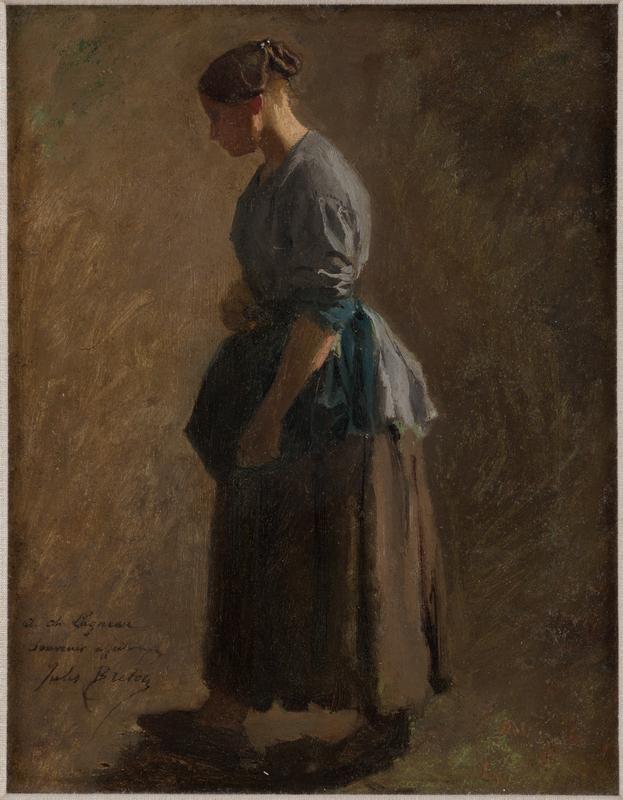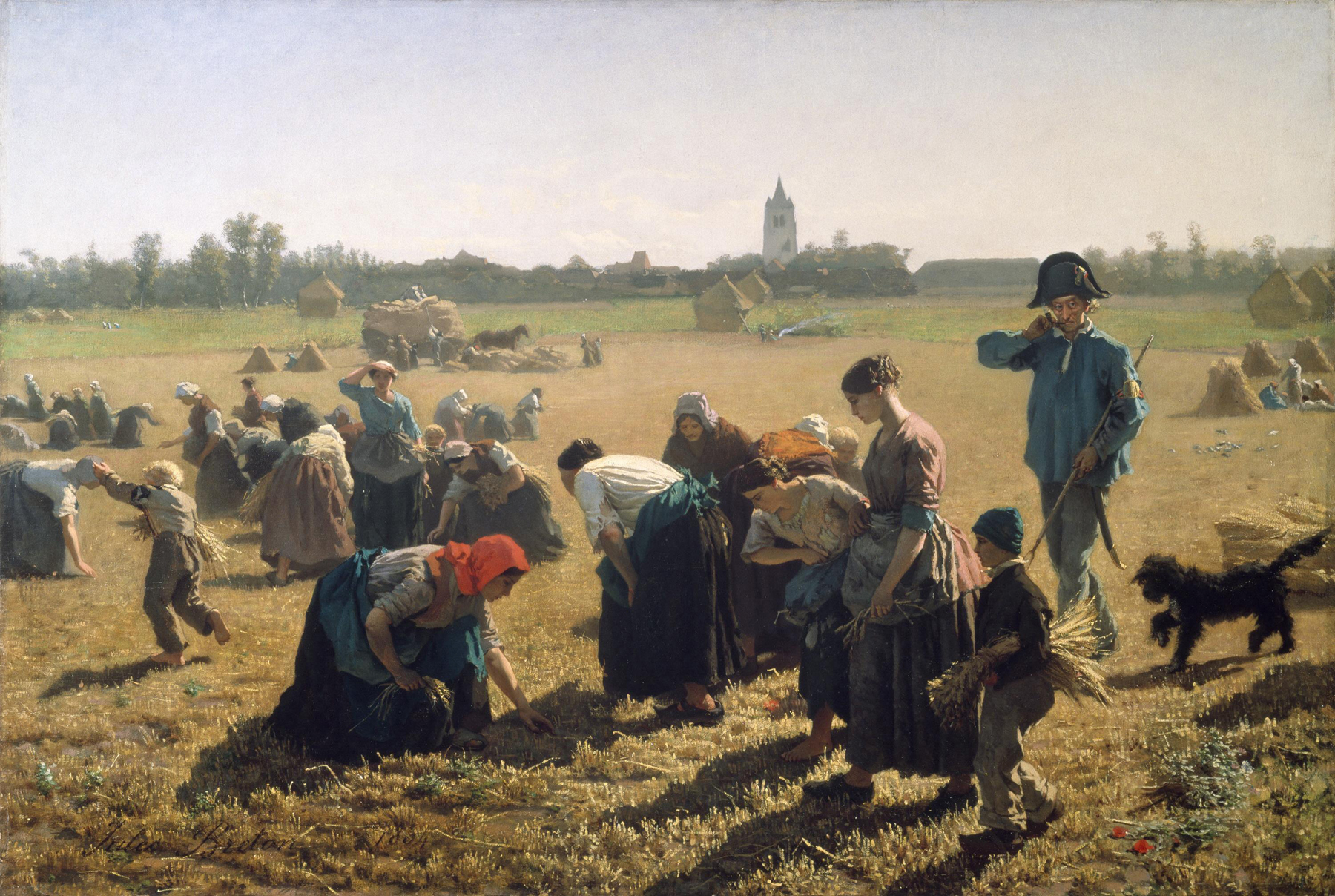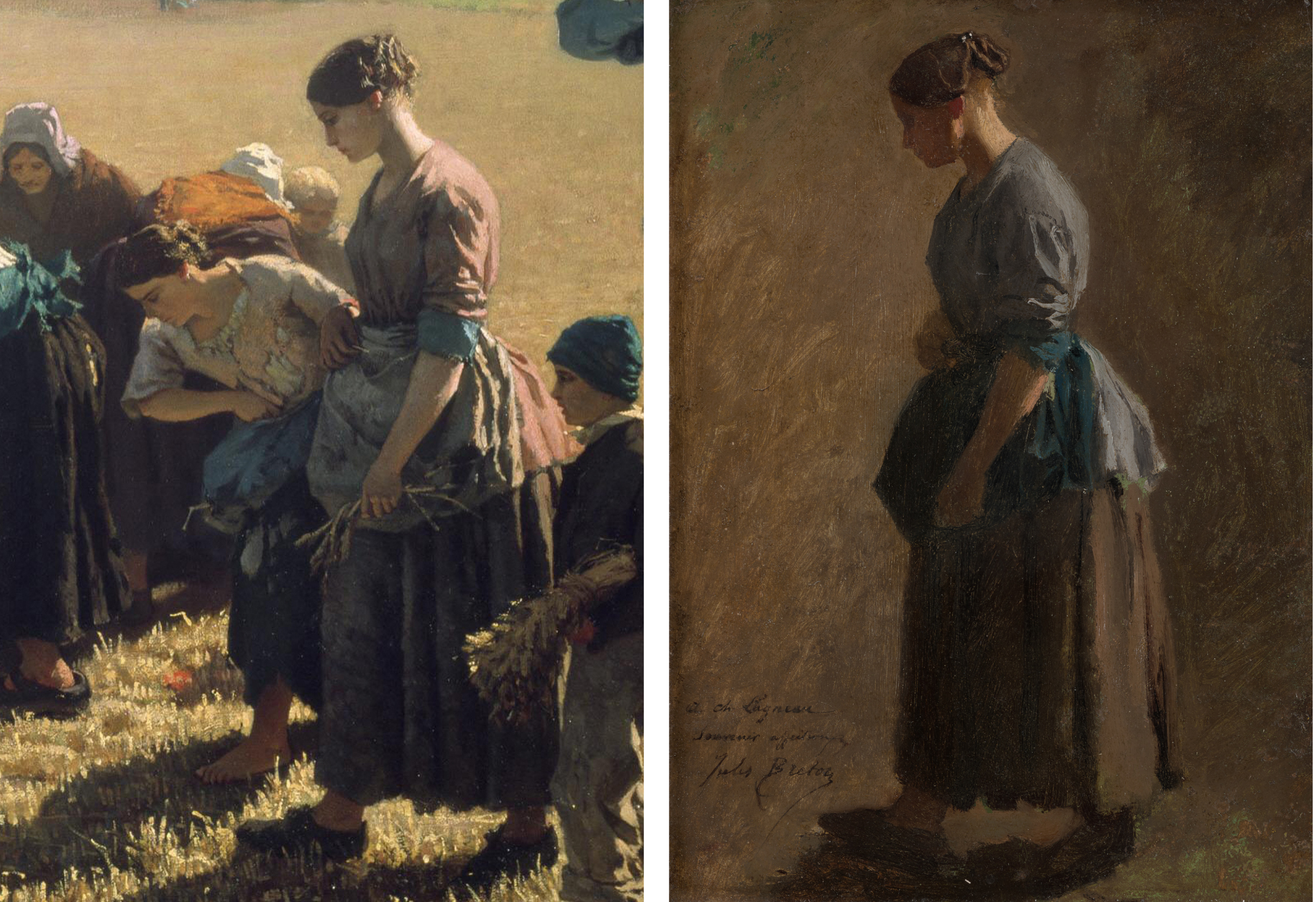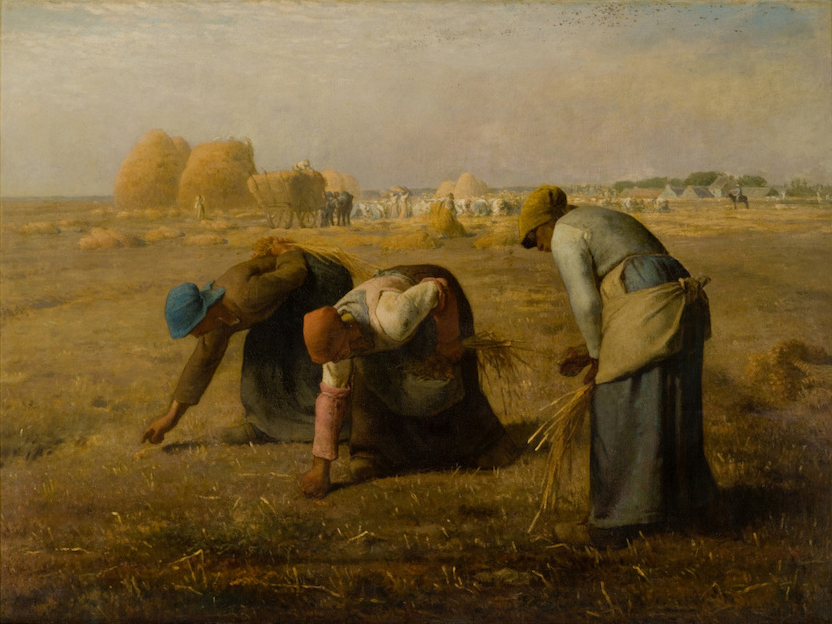
40. Jules Breton, Study for “The Gleaners of Courrières”
| Artist | Jules Breton, French, Courrières, Pas-de-Calais 1827–Paris 1906 |
| Title, Date | Study for “The Gleaners of Courrières”, c. 1854 |
| Medium | Oil on cardboard mounted on wood |
| Dimensions | 14 3/4 × 12 7/8 in. (37.5 × 32.7 cm) |
| Inscriptions + Marks | Lower left: A Ch. Lagneau / Souvenir affectueux / Jules Breton |
| Provenance | Given by artist to Ch. Lagneau. Suzanne Jacobs, Brussels; Paris flea market, with assistance from Jane Abdy; to Weisberg; Yvonne and Gabriel Weisberg, Minneapolis |
| Exhibition History | "Reflections on Reality: Drawings and Paintings from the Weisberg Collection," Mia, 2022–23 |
| Credit Line | Promised gift of Gabriel P. and Yvonne M.L. Weisberg, Minneapolis |
Jules Breton’s unassuming study of a woman in peasant dress has rich personal and social associations. It is a preparatory oil sketch made while Breton was working on his grand 1854 Salon painting The Gleaners of Courrières (fig. 1).1 Gleaning, the gathering of grain left behind by harvesters, enabled poor people to supplement their incomes. At the time Breton painted this subject, gleaning was a topic of national debate. Poor people saw access to the fields as a time-honored right. Landowners saw gleaning as an infringement on private property and an inducement for harvesters to do sloppy work. The conflict rose to a boil intermittently and was taken up by the French Senate in 1854.

Breton helped introduce gleaning as a new subject for paintings. Courrières is the village of his birth, at the northern tip of France. The artist’s mother died young, and his father was caretaker of land owned by a prominent aristocrat. Breton was at first a troubled student but eventually developed a taste for poetry and painting. His talent with the brush was recognized by the Belgian artist Félix de Vigne, a professor at the University of Ghent, in Belgium, who invited him to study there. After three years at the university and a brief apprenticeship in Belgium, Breton entered the École des Beaux-Arts (School of Fine Arts) in Paris. But the city overwhelmed the young man.2 He felt lost and alone. The 1848 Revolution, which ushered in the Second Republic, confirmed his belief that King Louis-Philippe’s regime was cruel to the working class.
Also in 1848, Breton’s father fell ill, and the young man was summoned back to Courrières. His father died soon after, leaving behind debts. The community’s generosity helped the family get back on its feet, further increasing Breton’s concern and affection for the local peasantry.
Preparatory to The Gleaners of Courrières, Breton made oil sketches of individual figures that he could then arrange as he pleased. At least three studies for the painting survive. The Weisberg work relates closely to the figure in the foreground toward the right (fig. 2). The sketch defines her posture, the general form of her clothing, and the lighting. In the final painting, Breton changed the color of her blouse and gave her a grain stalk to hold and flowers for her hair. The model here (and in other Breton works) is Elodie de Vigne, daughter of the Ghent professor who had encouraged Breton. She was then about eighteen years old. Four years later, she and Breton would marry. The presumed recipient of the sketch, one Ch. Lagneau, remains unknown to us.

Breton’s Gleaners won a bronze medal at the 1854 Salon. The award launched a career filled with fame, wealth, and official status, including memberships in the Institut de France, a seat on the Salon jury, and elevation to commander of the Legion of Honor. The success of the painting probably drew the attention of Jean-François Millet (1814–1875), who three years later exhibited his own picture of gleaners at the Salon (fig. 3). Millet’s painting is more somber and lacks the lighter touches found in Breton—the energy of the children, the lively sense of community, the somewhat comical appearance of the overseer and his dog. The hopeful air of the Breton version undoubtedly contributed to his reputation as one of the most popular peasant painters of the era.
GPW and TER

Notes
Gabriel P. Weisberg, The Realist Tradition: French Painting and Drawing 1830–1900 (exh. cat.), Cleveland Museum of Art and other venues (Cleveland, 1980), nos. 50, 50A, and 50B. ↩︎
Jules Breton, The Life of an Artist: An Autobiography, trans. Mary Jane Serrano (New York: D. Appleton, 1897), p. 162. ↩︎